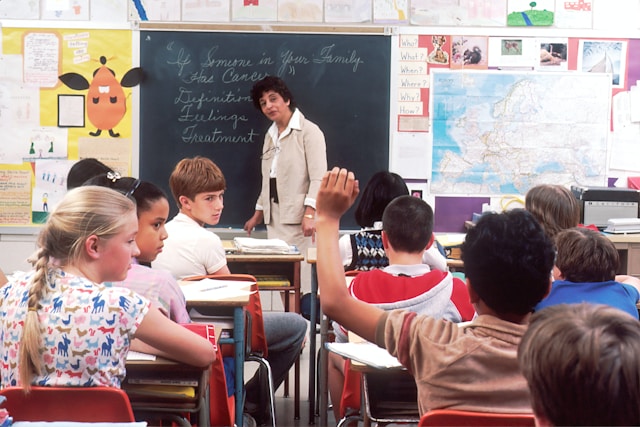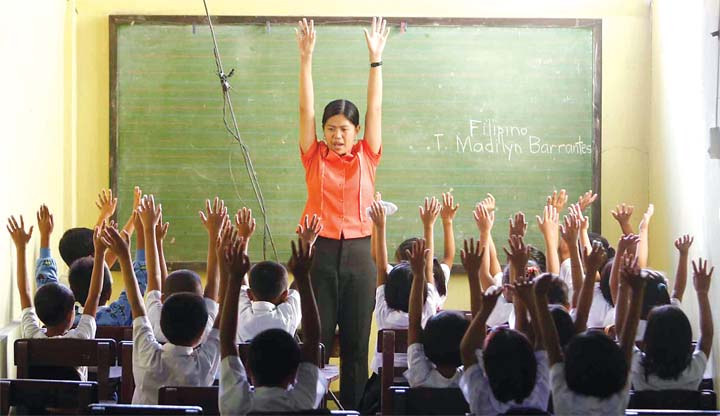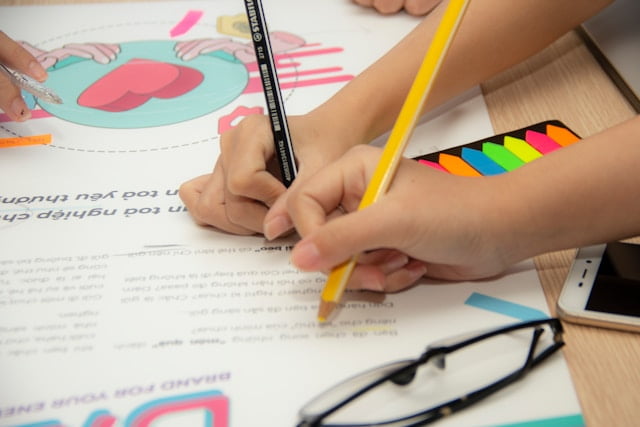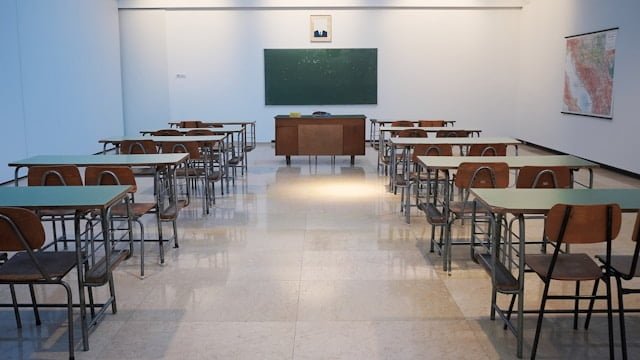Prof Ed Reviewer, Part 2
Question 1. Which assessment is/are used to grade students based on DepEd’s present grading system?
I. Formative assessment
II. Summative assessment
III. Assessment of Learning
A. I only
B. I and II
C. I and III
D. I, II, and III✅
Question 2. To enhance the significance and effectiveness of teaching, it’s recommended to connect the lesson content to students’ real-life experiences by incorporating applicable values. Which option aligns with this approach?
A. Share lesson objectives and outcomes with students.
B. Write SMART lesson objectives.
C. Lesson objectives/outcomes should be integrated with 2–3 domains: cognitive, skill, and effective learning.✅
D. Begin with the objective in mind.
Question 3. When a teacher encourages students to deconstruct, critically assess, and explore a concept or problem, which type of learning is being exemplified?
A. Synthesis
B. Application
C. Evaluation
D. Analysis✅
Question 4. This learning episode is characterized by documentation that is thorough, lucid, and systematically arranged. Which of the following best represents this description?
A. Assignment submitted before the deadline
B. Portfolio✅
C. Analysis of learning episodes
D. Reflections/insight
Question 5. Teacher Rina opts for real-world Math problems for student practice, avoiding out-of-context drills. This approach is based on which learning principle?
A. Effective learning begins with the setting of expectations and the learning of outcomes.
B. Learning is the discovery of personal meaning and relevant ideas.✅
C. Learning is an active process.
D. Learning is a cooperative and collaborative process.
Question 6. A bulletin board display featuring a variety of colors and an arrangement that captures and sustains interest demonstrates which criterion?
A. Balance
B. Interactivity
C. Utility
D. Attractiveness✅
Question 7. By having each student stand and personally submit their seatwork before dismissal, Teacher A is establishing which aspect of classroom management?
A. Routine✅
B. Code
C. Norm
D. Rule
Question 8. What type of questioning method is employed when Teacher A poses a sequence of questions to delve into and investigate the subject matter?
A. repeat
B. rephrase
C. redirect
D. probe✅
Question 9. In managing classroom behavior, what is a direct and efficient strategy for handling three disruptive students?
A. Assign them a separate seat.✅
B. Detain three after class.
C. Stop classes till the three-stop misbehaving.
D. Send them to the guidance room.
Question 10. Which scenario best exemplifies a teacher’s fusion of technology, teaching methods, and subject matter expertise in designing a Math lesson for fourth graders?
A. Encourages students to search for educational apps online and present their findings to the class.
B. Assigns students to watch educational Math videos and summarize their content.
C. Reviews and selects appropriate multiplication apps aligned with student abilities, demonstrates their use, facilitates exploration, and solicits lesson summaries from the students.✅
D. Consults fourth-grade Math standards to guide students through board-based multiplication exercises.
Question 11. The student-centered approach to teaching, which focuses on discovery learning, is primarily supported by which educational philosophy?
A. Behaviorism
B. Progressivism✅
C. Essentialism
D. Existentialism
Question 12. Which characteristic indicates that a teacher uses comprehensive principles, such as the Golden Rule, in forming moral decisions?
A. Promotes the sharing of diverse viewpoints
B. Cultivates personal self-worth
C. Contemplates the implications of moral decisions✅
D. Considers the perspectives of various individuals
Question 13. John Dewey’s assertion, “An ounce of experience is better than a ton of theory,” highlights the ____.
A. need for theory
B. primacy of experience✅
C. need for experience
D. primacy of theory
Question 14. Among the listed programs, which one allows for community-wide participation and assistance?
A. Mother Tongue-Based Multilingual Education Program
B. Education Service Contracting
C. E-Impact
D. Brigada-Eskwela✅
Question 15. If individuals coexist peacefully and harmoniously through appreciating each other’s traditions and values, the situation is best described as:
A. interdependence
B. accentuated risk
C. pluralism and diversity✅
D. contemporaries
Question 16. Which aspects among the listed options reinforce the notion that the Philippine education system is centered around the community?
I. Encouragement of local initiative.
II. Community values reflected in the education program.
III. Fiscal support through congressional legislation.
IV. Children, adults, and out-of-school education in the community.
A. I, II, and IV✅
B. I, III, and IV
C. II, III, and IV
D. I, II, III, and IV
Question 17. The principle that “Each learner approaches the world in many ways” can be best applied in a multicultural classroom through:
A. Varied learning experience
B. Standard lesson plan✅
C. Outcome-based syllabus
D. Multigrade teaching
Question 18. To address the issue of high student population density in public schools, what effective measure did the Department of Education (DepEd) put in place?
A. Tapping NGOs who assist schools
B. Evening vocational classes for drop-outs
C. Morning and afternoon sessions✅
D. Development of instruction materials
Question 19. When participating in various programs for personal and professional enhancement, what is the most commendable motivation expected from teachers?
A. Higher position according to the set merit system
B. Stature as a degree holder in education
C. Aspiration to become a master teacher
D. Intrinsic desire to grow continuously✅
Question 20. Teacher Jenny is not aligning with which fundamental learning principle by not sharing the intended learning outcomes of her lessons with her students?
A. Learning is the discovery of the personal meaning of ideas.
B. Learning is an active process
C. Learning is a cooperative and collaborative process
D. Effective learning begins with setting clear expectations and learning outcomes✅
Question 21. To show the effectiveness of the behaviorist philosophy in motivating students, which practice should Teacher Jess adopt?
A. Non-authoritarian approach to teaching
B. Subject-matter-centered teaching
C. Back to the basics move
D. Use rewards and incentives✅
Question 22. The student-centered teaching approach, highlighting discovery learning, is primarily influenced by which educational philosophy?
A. Behaviorism
B. Progressivism✅
C. Essentialism
D. Existentialism
Question 23. Which aspect indicates that a teacher incorporates moral principles, such as the Golden Rule, in their ethical decision-making?
A. Encourage others to share their ideas
B. Develops self-esteem
C. Reflects on moral choices✅
D. Takes into account the opinions of others
Question 24. Teacher Coleen’s approach to keeping the classroom clean and orderly to discourage students from disarranging chairs and littering is rooted in:
A. Existentialism
B. Behaviorism✅
C. Progressivism
D. Reconstructivism
Question 25. Based on the “Learning to do” pillar of education, the ability of a learner to significantly contribute to a peaceful and just society is enabled by:
A. Knowledge
B. Insight
C. Skills✅
D. Values
Question 26. This area encompasses understanding the theories and methods of teaching, including setting goals, creating learning activities, and evaluating student progress.
A. Knowledge of teaching techniques
B. Knowledge of the subject matter
C. Knowledge of teaching methods and strategies✅
D. Knowledge of instructional approaches
Question 27. What type of questions does Teacher A use when engaging students in a sequence aimed at delving deeper, investigating, or seeking more information?
A. Repetition
B. Rephrasing
C. Redirection
D. Probing✅
Question 28. In managing classroom behavior, the prompt and practical response to three disruptive students is:
A. Moving them to different seats✅
B. Keeping them back after school
C. Halting lessons until they behave
D. Referring them to the counseling office
Question 29. Supporting shy and reserved students is most effectively done by offering ____.
A. Encouragement✅
B. Patience
C. Structured guidance
D. Continuous counseling
Question 30. In his Math class, when Teacher Knoi displayed a graph and asked, “What data is the graph concerned with?” instead of “What do you see in the graph?”, he was employing which questioning technique?
A. Evaluative
B. Tolerance
C. Convergent✅
D. Persistent counseling
Question 31. When Teacher Ruby guides students in the standard use of tool-based software, such as Microsoft, as a starting point, she is at which level of technology integration?
A. Adaptation
B. Infusion
C. Adoption✅
D. Transformation
Question 32. What trait is demonstrated by a teacher or principal who patiently listens to an upset student or hears out parents’ concerns?
A. Role model and source of inspiration
B. Skilled problem solver
C. Fair arbitrator
D. Attentive listener✅
Question 33. This kind of knowledge pertains to your understanding of the subject matter or the topic you are teaching.
A. Knowledge of teaching methods
B. Knowledge of instructional techniques
C. Knowledge of the subject matter✅
D. Knowledge of educational technology
Question 34. This is a crucial and foundational element in the process of differentiated instruction.
A. Initiatives led by students
B. Distinction in mistakes
C. Diverse performance levels
D. Indicators of initial proficiency✅
Question 35. Under DepEd’s revised grading system for Grades 1 to 12, on what are learners’ grades based?
A. Written work, performance tasks, and quarterly assessments✅
B. Comprehensive achievement tests
C. Written work and performance tasks
D. End-of-term assessments
Question 36. For a thorough understanding and effective management of “truancy,” through which perspective should it be analyzed to ensure a well-informed approach?
A. Portfolio for Evaluation
B. Portfolio for Development✅
C. Portfolio for Display
D. Portfolio for Assessment
Question 37. If you need to compare your students’ actual outputs with the expected outcomes, which type of portfolio are you gonna look into?
A. Assessment portfolio✅
B. Development portfolio
C. Showcase portfolio
D. Evaluation portfolio
Question 38. Which standardized test is designed to assess students’ knowledge and skills in subjects they have completed at different grade levels?
A. Remedial test
B. Achievement test✅
C. Intelligence test
D. Aptitude test
Question 39. Under the “Learning to do” pillar, what empowers a student to actively participate in creating a peaceful and equitable society?
A. Knowledge
B. Insight✅
C. Skills
D. Values
Question 40. What is the suitable approach for millennials who are more familiar with virtual environments (such as digital gadgets and applications) than with the real world?
A. Prohibiting mobile phones in school
B. Restricting Facebook usage and messaging
C. Organizing a meeting with parents through the Parent-Teacher Association
D. Integrating real-world contexts into learning✅
Question 41. What is regarded as the most significant aspect of Tyler’s Rationale?
A. The planning stage
B. Assessing the experience
C. Determining the objectives✅
D. Structuring the experiences
Question 42. In an outcome-based instructional framework, what is the most effective way to showcase competencies?
A. Diverse evidence of outcomes
B. Alignment with objectives✅
C. Ongoing monitoring and assessment
D. High scores on achievement tests and projects
Question 43. Teacher Lea, known for her exceptional ability to document knowledge, concepts, subject matter, and curriculum content, plays the role of a curricularist as a:
A. Evaluator
B. Implementer
C. Writer✅
D. Planner
Question 44. Which of the following activities is NOT a component of effective direct instruction?
A. Providing thorough review and explanation✅
B. Posing questions and ensuring comprehension
C. Advancing in rapid and repetitive steps
D. Offering structured feedback and corrections
Question 45. The main purpose of using varying heights in the bars of a Histogram to present statistical data is to show:
A. Data progression
B. Frequency distribution
C. Quantitative comparison✅
D. Representation of numbers
Question 46. Which among the applications below is rooted in B.F. Skinner’s Theory of Operant Conditioning?
A. Computer-assisted instruction
B. Project method✅
C. Mastery learning
D. Process flow
Question 47. Which of the following activities exemplifies collaborative learning?
A. Group projects focused on concept development and application✅
B. Student groups engaging in practice drills
C. Student groups going on a field trip
D. Group tutorials led by a teacher for students
Question 48. When calculating the final grade for a subject area in the K to 12 system, the method used is:
A. Cumulative
B. Averaging✅
C. Norm-referenced grading
D. Zero-based grading
Question 49. Regarding the Median, which statement is accurate?
A. It serves as an indicator of variability.
B. It represents the most consistent measure of central tendency.
C. It corresponds to the second quartile.✅
D. It is greatly influenced by extreme values.
Question 50. When a distribution is skewed to the right, the test is considered to be:
A. very easy
B. very difficult✅
C. of average/moderate difficulty
D. neither too easy nor too difficult



